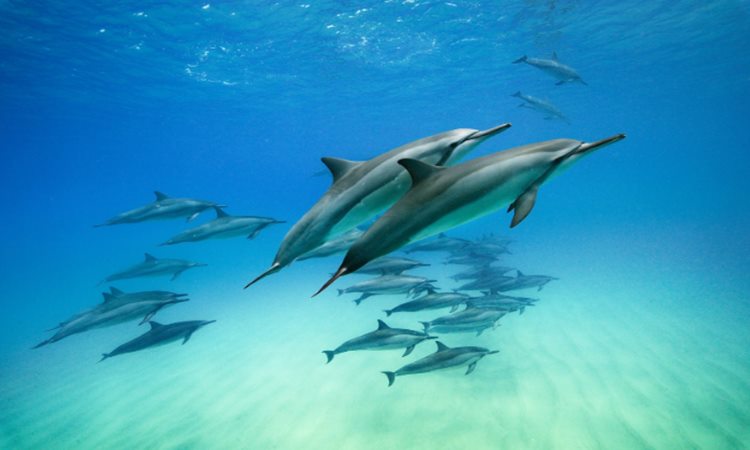Here are 6 Fascinating Facts About Dolphins
DOLPHINS – This article will reveal six astonishing facts about the remarkable world of dolphins.
Dolphins are celebrated for their intelligence, captivating vocalizations, friendly interactions with humans, and their enthusiasm for surfing. Beyond their entertaining attributes, dolphins display remarkable physiological capabilities and engage in surprising behaviors.
Here are six fascinating facts about dolphins that might surprise you:
1. Dolphins Call Each Other by Their Names
Dolphins use a variety of squeaks, grunts, and clicks to communicate. While the exact meanings of these sounds remain unclear to marine biologists, some serve as identifying calls. For example, the common bottlenose dolphin produces a distinctive melodic pattern of whistles, enabling others to recognize it even in challenging underwater conditions. Recent studies suggest that they mimic the whistles of close companions and family, showcasing a level of sophisticated interaction rarely observed outside the human realm.
2. Dolphins Turn Off Half Their Brains to Sleep
As aquatic mammals relying on oxygen, they have developed a unique sleep strategy known as unihemispheric slow-wave sleep. During this, one hemisphere sleeps while the other remains awake at a low level of alertness, allowing dolphins to control their breathing. Unlike humans, dolphins achieve approximately four hours of slow-wave sleep for each brain hemisphere in a 24-hour period, mirroring the recommended eight hours of sleep for humans.

3. Dolphins Teach Each Other to Use Tools
In Shark Bay, Australia, bottlenose dolphins exhibit tool use by using marine sponges to protect their snouts while hunting small fish. Mothers pass on this foraging technique to their offspring, with females showing more interest in learning than males. Additionally, dolphins in the same region engage in peer-to-peer learning for a technique known as “shelling,” using giant snail shells to capture and consume prey.
4. Dolphins Have Three Stomachs
Despite their casual dining habits, these intelligent creatures possess a three-chambered stomach designed for efficient digestion. Food is stored in the forestomach, digestion occurs in the main stomach, and the pyloric chamber completes the digestion process while regulating passage into the small intestine. This intricate digestive mechanism supports the bottlenose dolphin’s daily intake of 25 to 50 pounds of fish, squid, and crustaceans.
5. Dolphins Have Remarkable Powers of Recuperation
They showcase impressive recuperative abilities, regenerating tissue after major injuries. Research indicates that dolphins can recover from significant flesh loss due to shark attacks, restoring their full-body contour in about 30 days. This process occurs without signs of distress, suggesting a naturally induced form of pain relief accompanies their exceptional healing capabilities.
6. The U.S. Military Uses Highly-Trained Dolphins
Since 1959, these mamals have played a crucial role in the U.S. Navy’s Marine Mammal Program, working alongside sea lions. These highly intelligent creatures undergo training for tasks such as detecting underwater mines using their sonar capabilities and assisting in apprehending unauthorized swimmers. Dolphins have been deployed in real combat situations, including the Vietnam and Iraq wars, and currently contribute to safeguarding America’s nuclear stockpile at Naval Base Kitsap near Seattle, Washington.

In a previous article, we featured eight (8) new incredible species discovered in the year 2023.
